Buy LEGO The Hobbit
When it comes to LEGO games, players pretty much know what to expect. Take a licensed property, render it brick-style, include levels that require multiple playthroughs to fully explore, and throw in a dash of puzzles for good measure. Layer on some slapstick humor, local co-op play, and the ability to destroy almost any decorative item, and BAM, you have a LEGO game. It's a formula that has worked for most of the series, and LEGO The Hobbit is no different. What's here may not be super innovative, but there's no denying that it's plenty of fun.
Like LEGO The Lord of the Rings, LEGO The Hobbit is based not on J.R.R. Tolkien's original novel, but rather Peter Jackson's cinematic version of Tolkien's stories. This means that LEGO The Hobbit includes Jackson-specific characters like Tauriel, but it also means that LEGO The Hobbit doesn't cover the entirety of the original story. That's right; LEGO The Hobbit ends at exactly the same point as "The Desolation of Smaug." From a story perspective (and as a Tolkien fan), it is a bit frustrating, but from a gameplay and content perspective, Traveller's Tales hasn't skimped. LEGO The Hobbit delivers just as much, if not more content, than any previous title in the franchise.
Although it only covers the events that occur over two movies, LEGO The Hobbit includes 16 standard levels, plus the bonus level. This is on par with other LEGO games. Where LEGO The Hobbit stands out is in its expansive, open-world rendition of Middle-earth. Despite sharing some locations with LEGO The Lord of the Rings, what's here feels larger and more detailed than what we previously saw in that title. It also feels bigger than Gotham City in LEGO Batman 2 and the playable section of New York in LEGO Marvel Super Heroes.
The sharing of locations was a nice bit of fan service, as Traveller's Tales kept continuity between the two Tolkien games. For example, both the human city of Bree and the Elven city of Rivendell are repeated, but they are not exact copies. Major landmarks are the same, and the general layout is easily recognizable when moving back and forth between the games, but there are still numerous differences that can easily be chalked up to the passage of time between Bilbo's original adventure with the dwarves and Frodo's outing with the Fellowship.
Keeping the dwarves straight is one area where LEGO The Hobbit noticeably improves over LEGO The Lord of the Rings. Exploring with a large group in the prior game could sometimes result in confusion when trying to quickly switch between characters. This time around, that confusion is replaced by convenience. LEGO The Hobbit smartly places a blue circle around your character and the character that you're going to swap to. No fuss, no surprises.
Another trick used by LEGO The Hobbit is splitting the party during story levels. When you have a large group, the game makes things more manageable by way of intelligent level design. Instead of throwing it all at you, the levels are split into different sections, with certain characters appearing in each section. It is possible to switch between the groups at will. In fact, you'll need to do this to progress in some areas. Since the game supports drop-in/drop-out co-op, some story sections had to be slightly modified, but it's always done in a way that fits. For example, when Bilbo is facing off against Gollum in the film, he does it solo. Here, you have a confused goblin by your side.
LEGO The Hobbit also feels more polished when it comes to custom item use. When encountering an obstacle that required a specific special ability or an item carried by a character in your party, the game had that character wave the item around as a visual hint that you're supposed to switch over. It's subtle enough that it never felt like blatant assistance (even if the game was holding your hand). For those free-play instances where you want to quickly find a character with a certain ability, the character select screen includes a list of special abilities underneath each character's name.
New to the LEGO franchise is the addition of loot. The games have always had stud collection (and that hasn't gone away), but now you also have to collect resources such as gems, minerals and tools. These resources are used during story missions and free-play quests as well as when crafting Mithril items at the blacksmith. There is an abundance of loot during story levels, so you're never blocked from proceeding, though resource shortages do happen in free play. When that occurs, you can collect more or, if you've completed story mode, purchase the needed resources with studs.
Visually, LEGO The Hobbit is easily the best-looking LEGO game available. Perhaps it is the extra horsepower provided by the current generation of consoles, but comparing similar areas in LEGO The Lord of the Rings on Xbox 360 and LEGO The Hobbit on Xbox One is like night and day. Aside from the level of detail, the biggest difference is in the draw distance. The older game was very liberal about blurring items in the distance to better render items up close. With LEGO The Hobbit, all of Middle-earth is crystal clear.
With that said, the visuals were also one area where LEGO The Hobbit occasionally faltered. It was not a common event, but on a handful of occasions, the game dropped down to 10-15 frames per second. There didn't seem to be rhyme or reason as to why — it even occurred when using the eagles to fast-travel from one section of the map to another. Thankfully, the issue was rare enough that it didn't impact play. The other major technical issue was the occasional lockup. Again, this didn't impact play due to the way the game handles saving, and it only happened a handful of times, but it was still frustrating when it did occur.
In the end, LEGO The Hobbit is most aptly described as Skyrim-lite. The game is true to the films during story mode, but once free play opens up with its massive quest list (and even larger cast of characters), the sheer amount of available content is impressive. Many of the mechanics are familiar, but they're presented in a way that feels fresh and fun. Whether you're a Tolkien fan, a LEGO fan, or both, LEGO The Hobbit should be on your pick-up list.
Score: 8.5/10
More articles about LEGO: The Hobbit


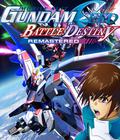
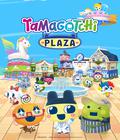
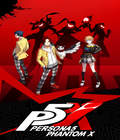
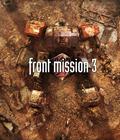

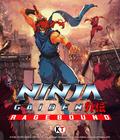
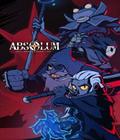
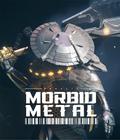

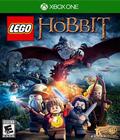 Following the story of the first two films, LEGO The Hobbit takes players on quests throughout Middle-earth. Join Bilbo Baggins, Gandalf the Grey, and Thorin Oakenshield and company in their exciting adventures toward the Dwarven Kingdom of Erebor.
Following the story of the first two films, LEGO The Hobbit takes players on quests throughout Middle-earth. Join Bilbo Baggins, Gandalf the Grey, and Thorin Oakenshield and company in their exciting adventures toward the Dwarven Kingdom of Erebor.





















